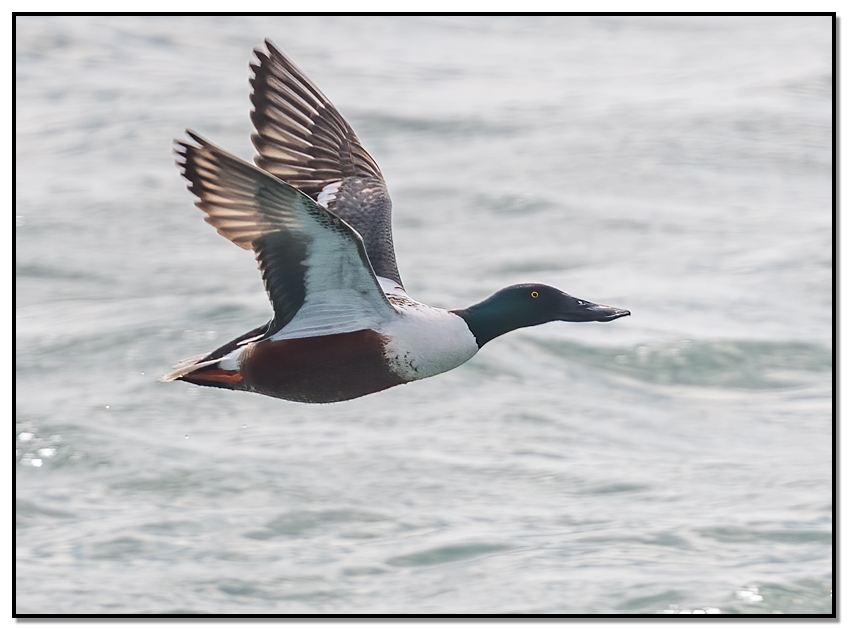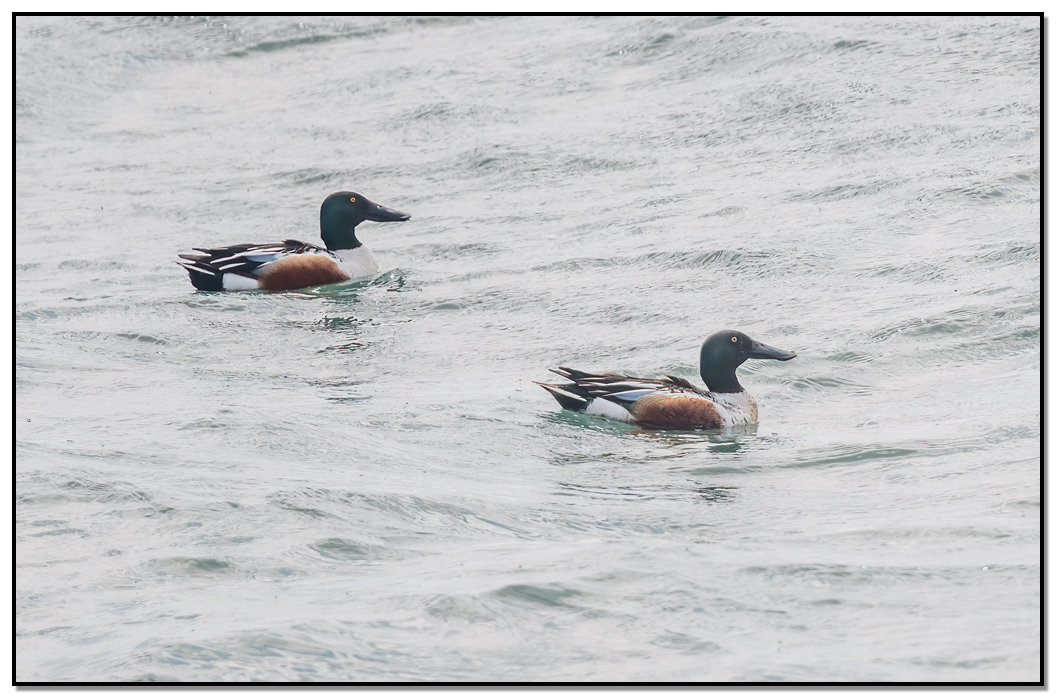Northern Shoveler (Spatula clypeata)

- HABITAT - Northern Shovelers breed are widespread across northern hemosphere, anywhere there is shallow wetlands or prairie potholes. Many migrate to southern U.S., Mexico, Central America, Africa, and South Asia for the winter. Unlike other dabblers like mallards or pintails, shovelers tend to stick to still, nutrient-rich ponds and marshes where they can find plenty of plankton and aquatic insects. They’re less likely to be seen on large open lakes.
- DIET - The shoveler’s wide, spoon-shaped bill is lined with over 100 fine comb-like structures called lamellae. These act like a strainer, allowing the bird to sift tiny aquatic invertebrates, seeds, and plant material from the water. They’ll often feed by swimming in circles, creating a vortex that stirs up food.
- FACTS - Despite their slightly awkward look on the water, Northern Shovelers are strong fliers. Their flight is direct and fast, often with quick wingbeats. Flocks can be surprisingly agile in the air.
